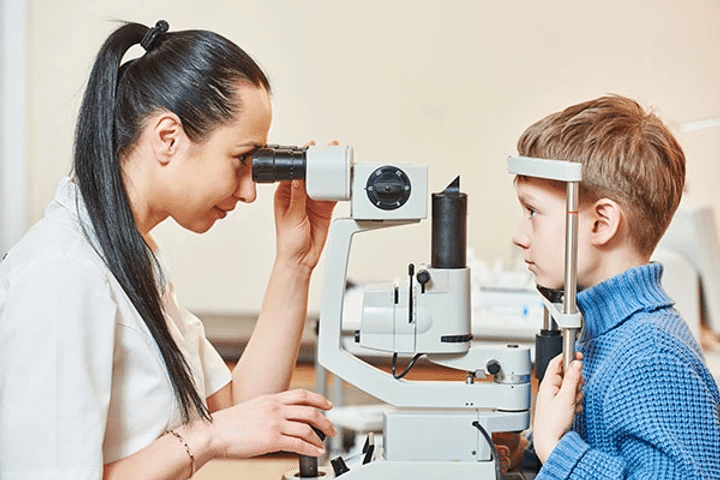8 serious health conditions that eye tests can detect
A simple routine eye exam is something that many of us put off, however they are extremely important for keeping not just our eyes but our whole body healthy. Eye exams not only pick up on any minor infections but can also reveal much more serious health conditions that could escalate if left untreated. Here are some of the conditions that eye tests can detect:

1. Cataracts
A cataract occurs when the lens of the eye becomes cloudy over time, either due to age or other health conditions. This causes blurred or decreased vision which can interrupt day-to-day tasks. Cataracts can affect one or both of the eyes and usually develops slowly. Your optometrist can detect the early signs of cataracts before your visions starts to be affected.
2. Glaucoma
Glaucoma is a condition where high pressure in the eye causes damage to the optic nerve. If left untreated it can lead to total and permanent blindness. The danger of this condition is that there are often little to no symptoms. Optometrists use a variety of tests used to detect Glaucoma that involve checking the pressure of the eye, testing your field of vision and examining the thickness and angles of your eye. Early diagnosis and treatment with regular monitoring can help to prevent sight loss.
3. Macular Degeneration
Macular degeneration refers to the damaged caused to the back of the eye called the macula, which is responsible for central vision. The condition is also commonly known as age-related macular degeneration (AMD) as it often becomes a problem with age due to cell damage. There are two types of macular degeneration; ‘wet’ and ‘dry’. Dry AMD is slow to develop whereas wet AMD is quicker to develop. Both types of AMD are painless and usually only affect one eye. Early on there are often no symptoms but the condition may develop to cause blurred or absent vision in the central field. For Dry AMD visual aids and vitamins can be used to help the condition and for wet AMD laser therapy can be used to help with the treatment.
4. Diabetes
Much to many people’s surprise, a routine eye exam can detect early signs that you may be suffering from diabetes. Diabetes affects the small blood vessels inside your eyes and may cause them to leak blood or unusual yellow fluids which your optometrist can pick up during the eye exam. Diabetes does not generally show any symptoms during its early stages so a trip to your local opticians can help identify the condition before you notice any changes to your sight.
5. Hypertension/ High Blood Pressure
A routine eye test can reveal signs that you have high blood pressure. This condition is often symptomless yet can be linked to life-threatening conditions such as heart disease. The optometrist can identify the effects of high blood pressure in the eye by looking for bends, leaks and tears in the eye’s blood vessels caused by the blood passing through the vessels with force. This is called hypertensive retinopathy. If left untreated it could lead to restricted blood flow and even blood haemorrhages behind the eye.
6. Autoimmune Disorders
Autoimmune disorders can be detected if the eye is inflamed, irritated, dry or swollen as a result of an autoimmune response. This could be a sign that you are suffering from Lupus, Grave’s disease, arthritis, Rheumatoid or Sjogren’s disease. Early detection of these autoimmune disorders is essential to begin treatment and monitoring.
7. High cholesterol/ Cardiovascular Disease
High cholesterol causes blood vessel blockages that can lead to serious heart problems. These blockages can also occur in the eyes as small lumps of cholesterol that are easily detectable during an eye exam. Your optometrist may also notice a subtle white or yellow right around your cornea (the clear outer layer of the eye). These problems often go unnoticed so it is important to visit your optician before the blockages lead to further problems such as blind spots and visual loss.
8. Tumours
It is possible for your optometrist to come across something as serious as eye, brain or neck cancer which means a simple routine eye exam could be potentially life-saving. Swelling of the optic nerve could indicate that a brain tumour is present and droopy eyelids or irregularly shaped pupils could suggest a neck tumour or an aneurysm. Indicators such as these usually appear in the early stages before other symptoms begin to show so it’s important that you have regular eye check-ups to be on the safe side.
Related articles




